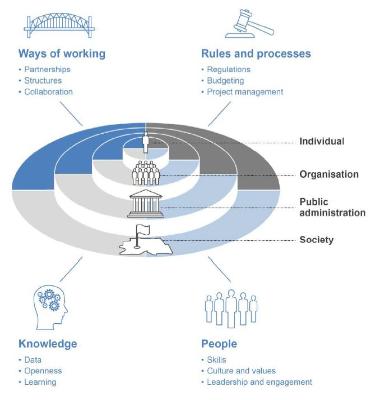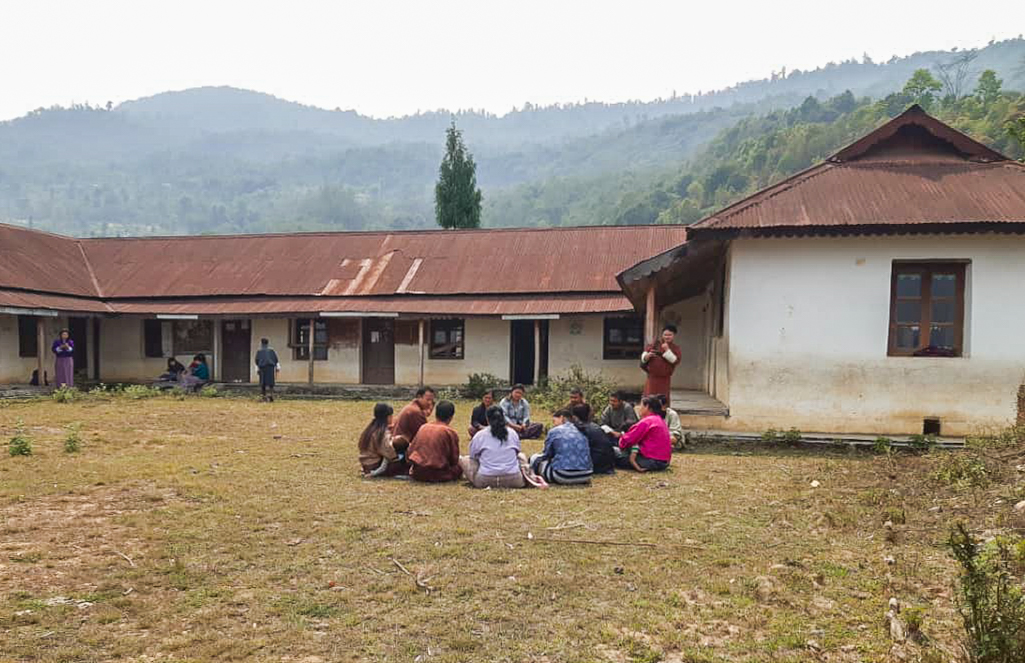For an innovative public sector
By Azusa Kubota, Resident Representative of UNDP Bhutan and Tshoki Zangmo, Head of exploration, Bhutan Accelerator Lab
Innovate or die is a phrase we often hear from business gurus. In the private sector market pressure, the need to stay competitive and ahead of the pace of change, does not allow for one to maintain status quo. Innovation is the key, and without it one simply invites inevitable death of one’s business.
Does this ring true for the public sector?
The impact of the prolonged COVID-19 pandemic has regressed development gains of the past. Bhutan’s GDP has been predicted to decrease by three percent end of 2021 . It has also heightened the already high public debt.
As per the recent Voluntary National Review report for Bhutan, progress in most of Sustainable Development Goals has been hampered. People have lost jobs, mental health has deteriorated, and poverty has been further aggravated.
To respond comprehensively to these growing challenges, the public sector merits renewed attention to greater innovation efforts.
Bhutan’s public sector is a major employer and occupies a substantial source for investments and procurements with its expenditure accounting to more than 30 percent of the GDP. This suggests that the public sector has the potential for contributing significantly to Bhutan’s economic growth by accelerating innovation.
The ever-increasing expectations of the citizens, also calls for a more citizen focused service delivery and opportunities for innovation.

Public service providers carry out an exercise during an experimental empathy training
So, what exactly is innovation?
When we think of innovation, we often think that it involves complex technology. This assumption may give most public servants the impression that without IT skills, innovation in the public sector may be unachievable. But nothing could be further from the truth.
OECD defines public sector innovation as, “…the creation and implementation of new ideas on processes, products, services and methods of delivery which result in significant improvements in outcomes of efficiency, effectiveness or quality.”
Innovation does not always need to be technologically driven. It, however, means that ideas are being experimented in a form that generates value or at least some learning. Hence, operationalization is key in the innovation landscape.
OECD has come up with four organizational factors that need to be considered to pursue innovation in the public sector. It starts with public servants and how they are motivated to innovate, followed by knowledge representing their skills and capacities to innovate. Next, ways of working depict how innovation is structured within an agency and the last being rules and processes that imply the enabling environment supporting innovation.

OECD developed integrated framework states there are four levels where innovation takes place
Public servant’s existing innovation capabilities in the country have been particularly evident in the face of the pandemic. Fast-paced adaption and response have notably occurred in health and education through some level of collaboration with actors from the private sector.
However, as per the most recent data on Global Innovation Index (GII), Bhutan’s value fell significantly in 2016, ranking 96 out of 128 countries.
So, how may we improve?
If we are to learn lessons from the private sector, it is important that we recognize the enabling innovation ecosystem around it.
For instance, in the private sector, innovation is assessed within one unit, the enterprise or company with often the sole objective of maximizing shareholder value. In comparison, a unit in the public sector is represented by a complex system of agencies with multiple players, wherein the objective of ensuring ‘public interest’ functions on the principles of ‘stability’ and ‘continuity’.
Some key challenges faced by the public sector innovation include:
1. The risk averse culture that we commonly hear is fueled by the security aspect of employment. Public servants are stifled by low tolerance of occasional failures coupled with limited leadership support.
2. The limited incentive structure in the public sector for bringing up and implementing innovative ideas, as compared to the private sector which offers bonuses, promotions and the respect of peers and supervisors.
3. There is limited space and resources for public servants to connect and collaborate on innovative ideas and their implementation which may lead different teams to reinvent the wheel.
4. The lack of a public sector innovation policy and strategy for supporting, generating, and implementing innovative ideas.
But highlighting these barriers is not to state that there is lack of efforts in the public sector. Contrary to this, there are many ongoing efforts to integrate innovation in the public sector.
Nevertheless, innovation is not always a straightforward affair and requires a structured approach. The following table aims to provide a rough roadmap:
Short-term |
Long-term |
1. Carry out an innovation maturity assessment: Such an assessment offers ways to reflect and deep dive on stages public sector agencies are in with their innovation efforts and will enable them to understand their innovation strengths and weaknesses. 2. Leverage and partner with existing innovation labs in the country: UNDP Bhutan’s Accelerator Lab established in 2020 provides such a space to test ideas, experiment and accelerate learning. 3. Crowdsource solutions/ideas: The Singaporean government has been crowdsourcing solutions/ideas from the public in form of open call hackathons and idea portals to solve problems and issues. 4. Embrace radical innovation: Instead of incremental efforts, promote radical innovative efforts to test assumptions and explore different possibilities. |
1. Improve innovation capability: Enhance the capacity of innovation in public institutions through the development of core skills and competencies. NESTA outlines several skills to properly innovate. 2. Develop public sector innovation strategy: A key significant enabling environment for innovation is the support system created by a robust innovation policy and strategy. 3. Establish an innovation lab and be open to experimentation: There is a number of innovation labs operating in countries. Such governmental innovation lab can help demonstrate learning at an experimental level and help activate continuous learning loops. 4. Incentivize innovation: Failure rewards, 20% rule, innovation awards are few of many incentives programs that allow a team or individual to be motivated to innovate. 5. Encourage innovation-oriented public private partnerships: Innovative solutions Canada, Innovation Superclusters Initiative are great examples to foster multi-stakeholder co-creation . Such partnerships will not only provide avenues for technology transfer process but also encourage innovative financing schemes. |
At the end of the day, a public servant needs to migrate from ‘I have an idea’ to ‘I innovate’ spectrum. For this, our capacities to view innovation in the public sector from a systems lens, needs improving. We need to uncover the enablers and common pitfalls to uncover complex challenges dwelling within the interknitted structures of public sector ecosystem.
Our economy is at crossroads. There is an urgency to not only meet the needs generated by the pandemic but to also re-orient recovery to a more sustainable one. Let’s use the pandemic as a wakeup call to help accelerate innovation in the public sector or else we are at risk of being left further behind.

Civil servants engaging with rural folks in a deep listening exercise, as part of the Public Service Delivery Initiative

 Locations
Locations